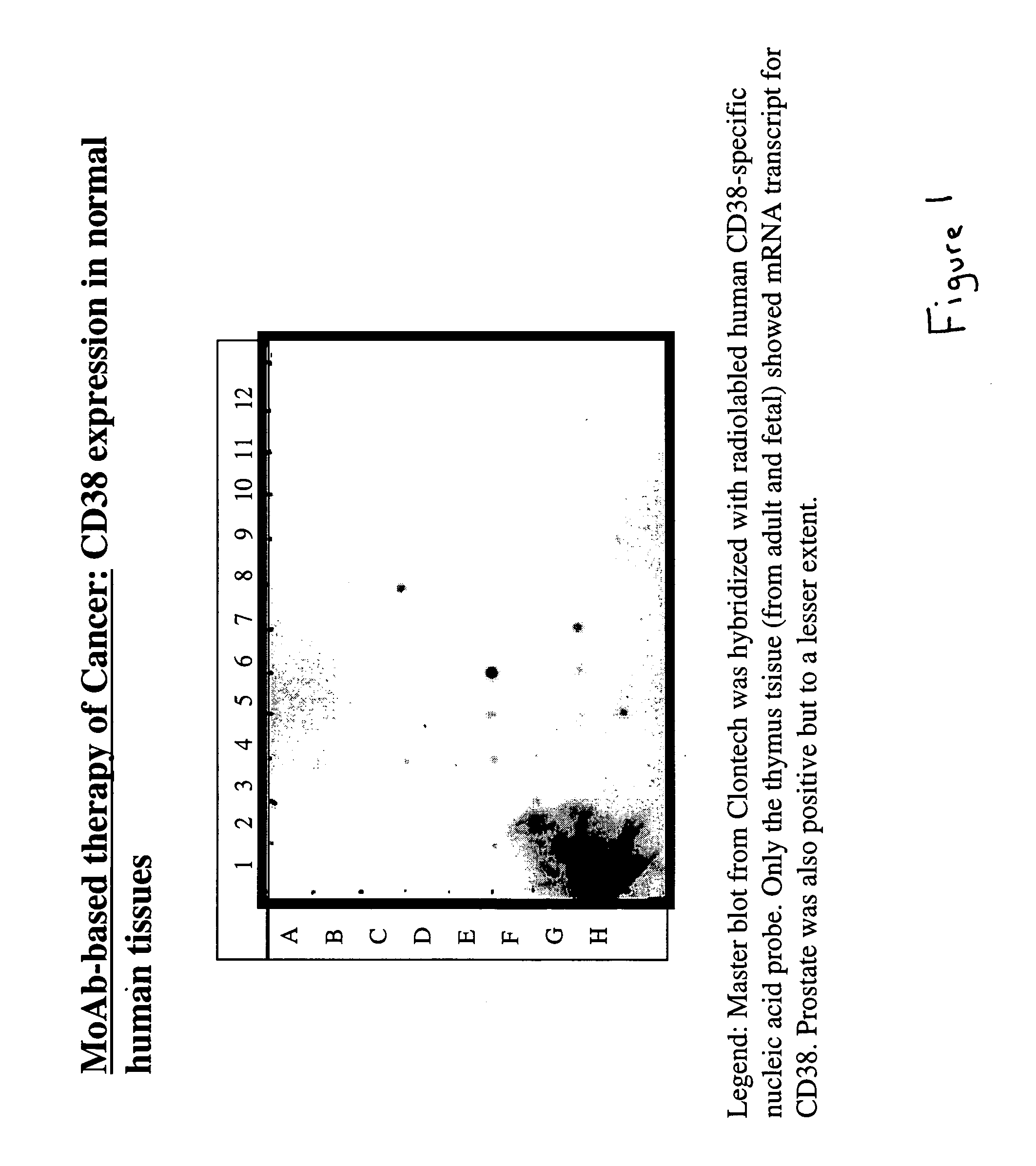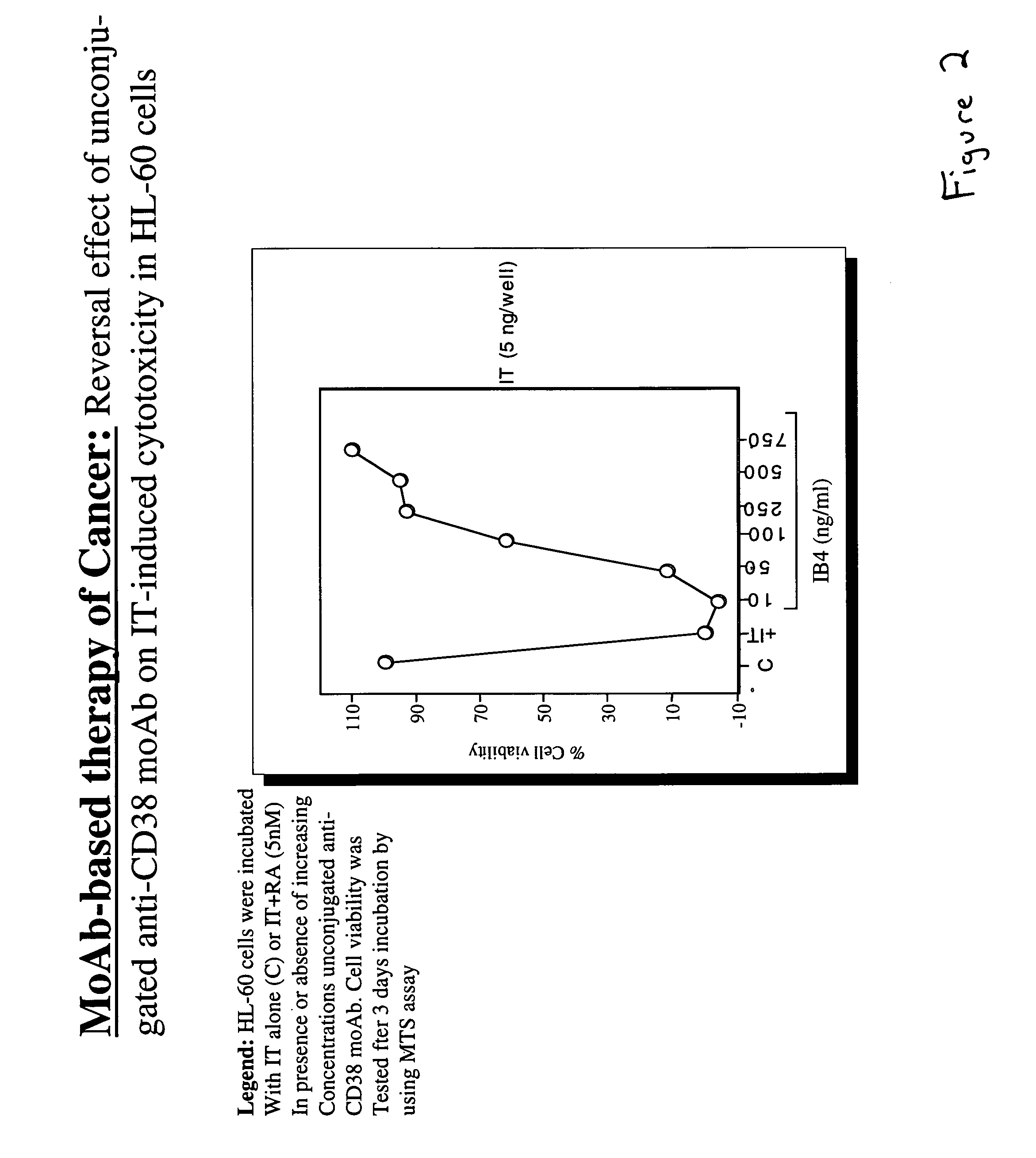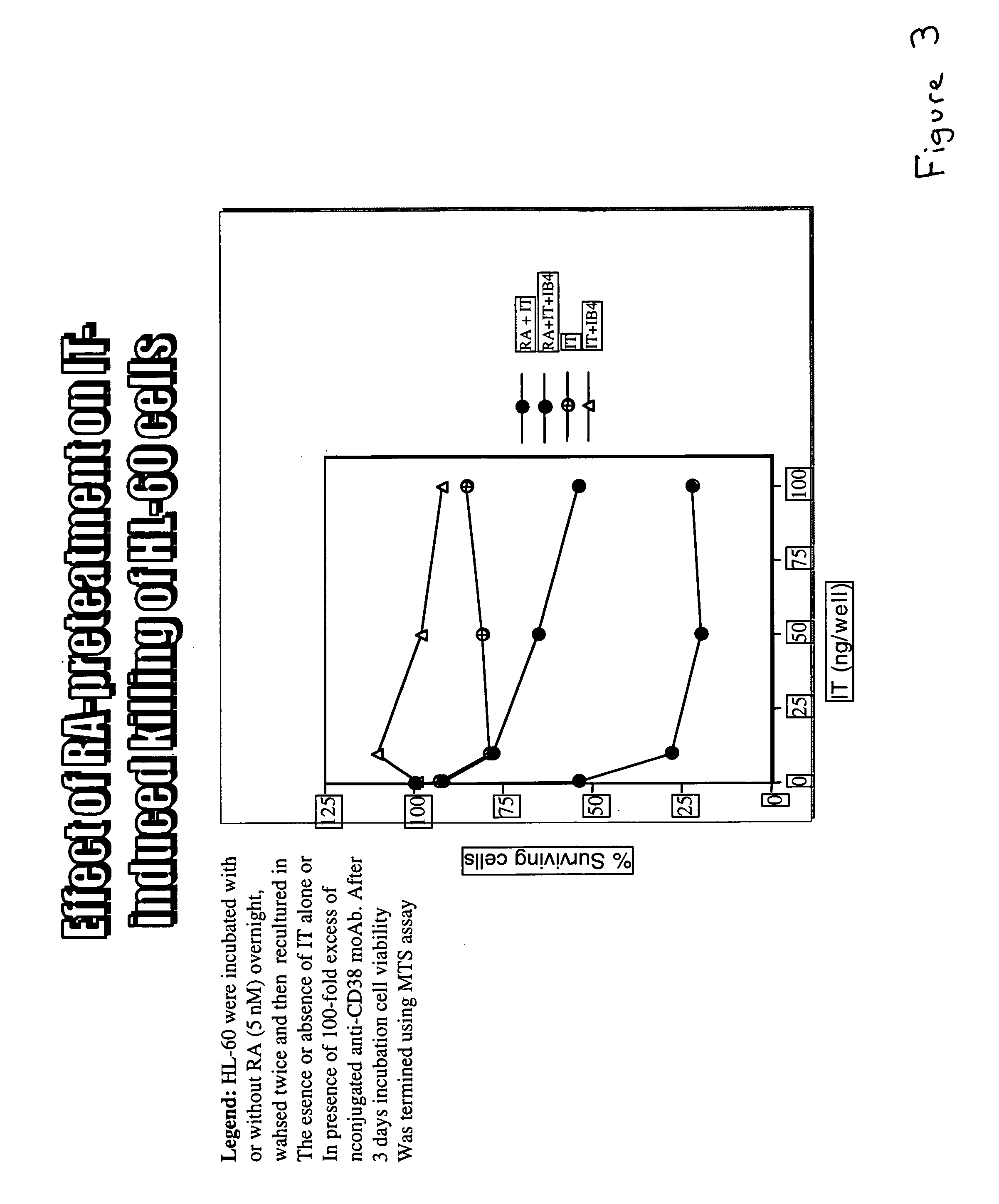Potentiation of anti-CD38-Immunotoxin cytotoxicity
a technology of immunotoxin and cytotoxicity, which is applied in the field of immunotumor biology, can solve the problems of cell death, cell death, and cell death, and achieve the effect of being extremely sensitive to immunotoxin-induced killing
- Summary
- Abstract
- Description
- Claims
- Application Information
AI Technical Summary
Benefits of technology
Problems solved by technology
Method used
Image
Examples
example 1
CD38 Expression in Normal Tissues is Limited Mainly to the Thymus.
[0029]The tissue specificity of CD38 was examined by the hybridization of a radiolabeled CD38 nucleic acid probe against a commercial (CLONTECH) tissue specific mRNA dot blot. The results of the hybridization are shown in FIG. 1. It was observed that CD38 is mainly expressed in the thymus with significantly lower levels of expression in the prostate.
example 2
Retinoic Acid (RA) Augments the Cytotoxic Effect of Immunotoxin Through Enhanced Expression of CD38.
[0030]HL-60 cells were incubated with either immunotoxin alone or in the presence of 5 nM retinoic acid (RA). Increasing concentrations of unconjugated IB4 monoclonal antibody were added to the cells incubated with immunotoxin and retinoic acid. After three days, the cells were assayed for viability with the MTS assay. Briefly, 6.5 mg / ml MTS solution [(3-(4,5-dimethylthiazol-2-yl)-5-(3-carboxymethoxyphenyl)-2-(4-sulfophenyl)-2H-tetrazolium] and 0.5 mM PMS (phenazine methosulfate) solution were mixed at a ratio of 20:1. 20 μl of the combined MTS / PMS solution was placed in each well of a 96 well plate containing samples of the cells to be tested. The plate was incubated for 1–4 hours at 37° C. in a 5% CO2 atmosphere, after which time, the amount of formazan produced by live cells from cellular reduction of MTS was measured by reading the absorbance at 490 nm. The results are shown in FI...
example 3
All-Trans-Retinoic Acid (RA) Pretreatment Enhances the Induced Killing of HL-60 Cells.
[0032]HL-60 cells were preincubated overnight in either the presence or absence of 5 nM all-trans-retinoic acid. The cells were washed twice and incubated in increasing concentrations of immunotoxin in either the presence or absence of IB4 unconjugated anti-CD38 MoAb. After three days, the cell were assayed for viability. The results are shown in FIG. 3.
[0033]Preincubation with all-trans-retinoic acid followed by immunotoxin treatment resulted in more cell death than treatment with immunotoxin alone. The presence of 100 fold excess of the unconjugated anti-CD38 monoclonal antibody IB4 blocked the toxicity of the immunotoxin in both cases by competing with the immunotoxin for access to the CD38 markers on the cells. These results demonstrate that the all-trans-retinoic acid (RA) was causing some change in the cells which render them more susceptible to the immunotoxin rather than playing a direct ro...
PUM
| Property | Measurement | Unit |
|---|---|---|
| molecular structures | aaaaa | aaaaa |
| cell surface protein | aaaaa | aaaaa |
| adhesion | aaaaa | aaaaa |
Abstract
Description
Claims
Application Information
 Login to View More
Login to View More - R&D
- Intellectual Property
- Life Sciences
- Materials
- Tech Scout
- Unparalleled Data Quality
- Higher Quality Content
- 60% Fewer Hallucinations
Browse by: Latest US Patents, China's latest patents, Technical Efficacy Thesaurus, Application Domain, Technology Topic, Popular Technical Reports.
© 2025 PatSnap. All rights reserved.Legal|Privacy policy|Modern Slavery Act Transparency Statement|Sitemap|About US| Contact US: help@patsnap.com



